Olympiad Test: High Order Thinking Skill - Class 5 MCQ
20 Questions MCQ Test - Olympiad Test: High Order Thinking Skill
Neeta, Rohit, Shree, and Shobhit were discussing the definition of ecosystem, community, population, and species. Which of the following definitions is correct?
Mountain lions give birth to their young ones in the spring. How does this reproductive adaptation increase the young mountain lions’ survival?
| 1 Crore+ students have signed up on EduRev. Have you? Download the App |
The following are pictures of leaves found on different plants.


Q. Which of these plants would be found in an ecosystem with heavy snowfall?


During long periods of dry weather many plants have a special adaptation that helps to keep them from losing water. What is this adaptation?
Paloma conducts an experiment using sunflowers, soil, and water. She plants five sunflowers in the same type of soil and places them on her table. She carefully measures different amounts of water to give to each sunflower each day. She measures the height of the sunflowers once a week. She kept one factor as an independent variable. [An independent variable is the one factor that is changed by the scientist.] Which of these is the independent variable?
The following is a diagram of the human digestive system.
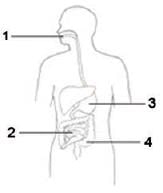
Which number shows the place where food mixes with acids to help break it down into parts that can be absorbed?
Below is a clinical observation report of a person showing some clinical indications. Read the report and answer the following questions.

a. What could be the reason behind the symptoms?
b. How can food modification help Mr. Shah?

Sumit built this model of the Sun, the Moon, and the Earth.

a. Which phase of the Moon is shown in Sumit’s model?
b. Where will the moon enter to cause total lunar eclipse?
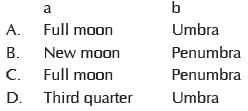
Which of the senses must be protected when doing an activity concerning a solar eclipse?
I. Touch
II. Taste
III. Sight
IV. Smell
Look at the image of the pulley.
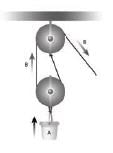
Read the following tables carefully and find out the correct option.

Identify the image. It is an example of which type of simple machine?

Study the given table to answer the following question:
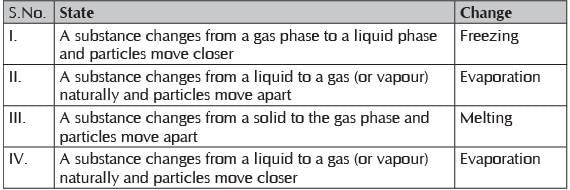
Which option is correctly paired?
Read the following descriptions to extract the correct questions.
Liquid:
a. Flow and fill the shape of the container up to a definite volume.
b. Move quickly and fill any available space.
c. Tightly packed and keep their shape.
Gases:
a. Gases have a definite volume, but solids and liquids do not.
b. Gases and liquids have no definite volume, but solids do.
c. Gases and liquids have a definite volume, but solids do not.
d. Gases gave no definite volume, but solids and liquids do.
Which two questions you can extract from above descriptions?
Look at the following water cycle.
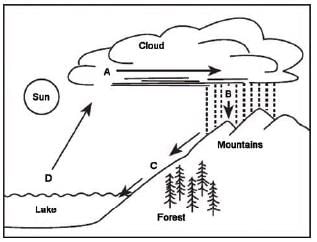
Which process is occurring at point D?
A plastic cup containing a wooden block is floating in a pan of water as shown in the diagram below.
a. If another wood block is placed in the cup, what will happen to thelevel of water in the pan?
b. What will happen if all the wood blocks are withdrawn from the plastic cup?
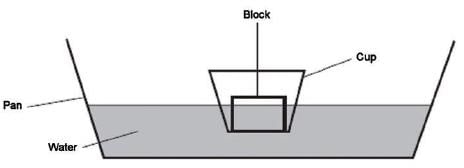

Some students were conducting an experiment at a stream. On the basis of the conclusions, answer the following questions:
- They saw that the larger a rock was, the bigger the splash it made. The students wondered if this was because larger objects fall faster.
- The next day, the students decided to conduct an experiment in the school yard using an orange, a rock, and a basketball. They asked one of the students to drop the objects from a tall ladder while they wrote down the time it took for each object to reach the ground. The table below shows the data the students collected.

Using the above information, choose the correct option (if air friction is ignored).
Rocks in the stream that the students were studying were smoother than the rocks found on the shore of the stream. What could be the possible reason for this?
Recently, City A experienced a natural calamity. The children from a school in City A tried defining the various natural calamities.
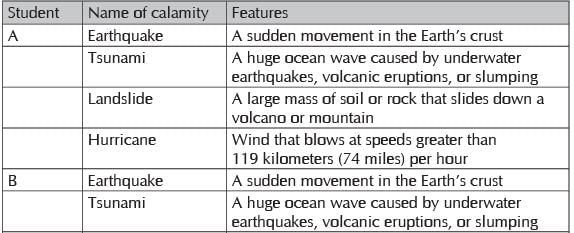
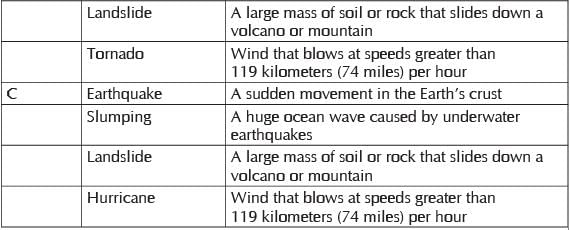
a. Which student has defined the natural calamities correctly?
b. How many of the natural calamities listed are related to the movement of the Earth?
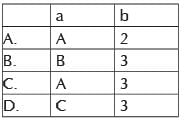
A pencil is lying in front of you. How many different types of matter are used to make it?
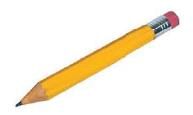
The table given below is incomplete. Which tools would you add in the table to complete it?


















